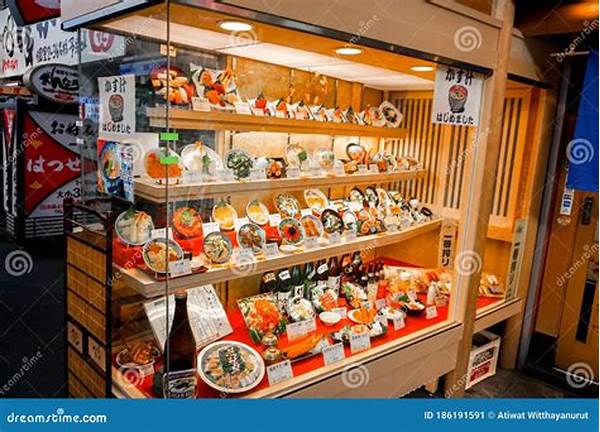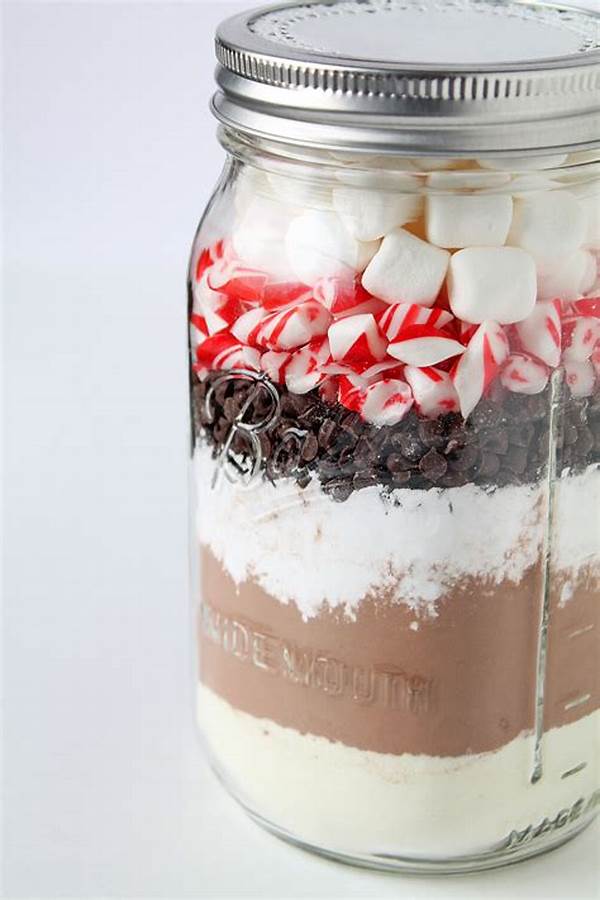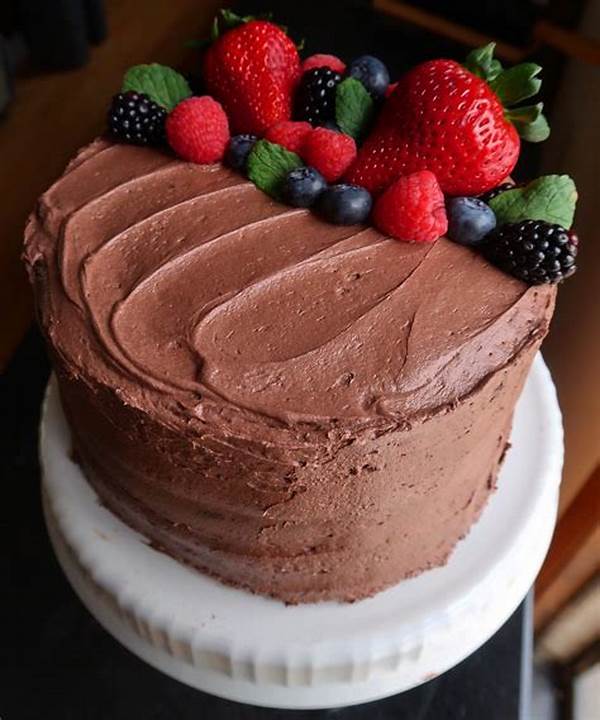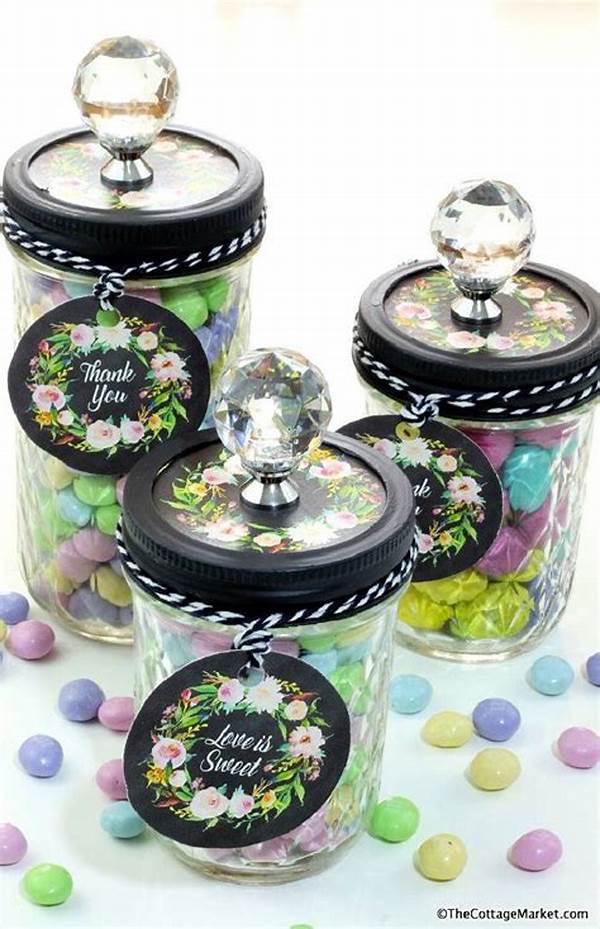Once upon a time in a bustling Tsukiji market of Tokyo, a young chef named Hiroshi, fascinated by culinary creativity, gazed at the masterful displays of food that lined the market stalls. This wasn’t just about selling fish or produce; it was an art form, a visual feast that stirred the imagination as much as it tantalized the taste buds. The meticulous arrangement of rice, seafood, and vegetables held stories untold, whispering the secrets of an ancient culture dedicated to beauty in simplicity. As Hiroshi walked through the aisles, he vowed to master the craft known as Japanese food display artistry, where presentation transcends taste.
Read Now : French Tart Recipes For Beginners
The Art of Japanese Food Display Artistry
Japanese food display artistry traces its roots to an age-old tradition that emphasizes harmony and balance. In this world, every dish becomes an elegant work of art, as chefs carefully balance colors, shapes, and textures to create a visual masterpiece. It is akin to painting on the finest canvas, where each brushstroke is replaced by a slice of sashimi or a sprinkle of sesame seeds. The artistry is not just about creating appeal, but also about honoring the ingredients, showcasing them in their purest, most beautiful form. As Hiroshi learned under the tutelage of master chefs, he realized that this artistry was a powerful narrative, one that spoke of nature’s bounty, cultural meticulousness, and the chef’s own creative spirit.
Hiroshi’s journey into the heart of Japanese food display artistry was marked by many struggles and triumphs. He soon understood the significance of presentation in Japanese culture. It was not enough for the food to be delicious; it had to be visually compelling, evoking an emotional response before the first bite was ever taken. With each arrangement, Hiroshi found himself telling stories through colors and forms, painting tales of tradition and innovation on every plate. In every artfully arranged bento box or neatly ordered sushi platter, he saw an opportunity to communicate the essence of Japan’s culinary heritage.
Exploring the Techniques of Japanese Food Display Artistry
1. The meticulous balancing of color and shape lies at the heart of Japanese food display artistry. Chefs use vibrant vegetables, colorful seafood, and creative garnishes to turn dishes into visually stimulating experiences.
2. Japanese food display artistry often involves the art of plating, where food is presented in a way that resembles an intricate landscape. Each element on the plate serves a purpose and tells a part of the story.
3. Texture plays a crucial role in Japanese food display artistry. Variations enhance the eating experience, with soft tofu juxtaposed against crispy tempura to create a rich tapestry of sensory delight.
4. Emphasizing natural elements is a key aspect of Japanese food display artistry. Ingredients are usually minimally processed to showcase their inherent beauty and flavor.
5. Seasonality is central in Japanese food display artistry. Chefs adapt their displays according to the season, incorporating elements like cherry blossoms in the spring or maple leaves in the fall.
Cultural Significance Behind Japanese Food Display Artistry
The enigma of Japanese food display artistry lies not only in its aesthetic appeal but also in the cultural philosophies it embodies. The Japanese have long believed in the connection between food, nature, and spiritual well-being, and this belief is woven into their culinary practices. Hiroshi, as he progressed in his quest for mastery, discovered that this artistry was more than just culinary skills; it was about forging connections.
Every time Hiroshi set a dish before his guests, he was opening a dialogue about Japan’s deep respect for the earth’s produce. The impeccable symmetry in his arrangements was a tribute to the balance and order found in nature. The vibrant colors mirrored Japan’s changing seasons, while the carefully chosen components of each dish were testimonies to the importance of freshness and locality. Through his dedication to Japanese food display artistry, Hiroshi was not merely serving meals; he was sharing pieces of cultural wisdom and fostering a deeper appreciation for the beauty of transience in both life and art.
The Nuances of Japanese Food Display Artistry
The beauty of Japanese food display artistry often lies in subtlety and harmony.
1. Precision and intention mark every placement on the plate.
2. Aesthetic principles borrowed from ikebana and tea ceremonies heavily influence presentation styles.
3. Minimalism allows the quality of ingredients to speak for itself, focusing on purity and taste.
4. Eye-catching contrasts abound in arrangements, drawing diners into a sensory exploration.
Read Now : Low-calorie Plant-based Meal Plans
5. Each display pays homage to the complexity of Japanese culinary history.
6. Balance is not just visual but also conceptual, linking each meal to a greater narrative.
7. Artistic flair doesn’t overshadow the chef’s pure intent: to honor the food.
8. Delight is found not in excess but in the beauty of simplicity and restraint.
9. Chefs are storytellers, narrating through color, texture, and form.
10. Each culinary piece is a brief but powerful communication of art, culture, and identity.
The Stories Behind Japanese Food Display Artistry
Tales of Japanese food display artistry are inexorably linked with a reverence for nature and tradition. Each plate is a chapter, and every dish has a story waiting to unfold. Hiroshi’s journey into this world was filled with fascination and respect, as he realized that his culinary creations could bridge the gap between diverse cultures. In Japan, meals are not merely consumed but are an artistic experience, carefully curated to evoke emotion and reflection.
Through Japanese food display artistry, Hiroshi learned to embrace the subtle narrative embedded within each ingredient. A scattering of green shiso leaves could bring to mind lush, serene landscapes, while the precise placement of pickled ginger invoked notions of respectful tradition. More than just a feast for the stomach, the dishes became stories that spoke to the diners’ senses, leaving lasting impressions long after the plates had been cleared.
As Hiroshi perfected his craft, he began to view each ingredient as a character in an unfolding drama, each presentation a chapter in an epic tale of taste and artistry. Japanese food display artistry allowed him to connect with his ancestors and share cultural stories with the world, honoring the craftsmanship of those who came before him and inviting future generations to carry the legacy forward.
Mastering the Details in Japanese Food Display Artistry
Among the crowded streets and ancient temples, where whispers of history linger, Japanese food display artistry thrives not as a trend, but as a cherished craft passed down through generations. Each detail is meticulously considered, from the smallest garnish to the largest sashimi. The plates are not just settings for food but stages where culinary artist-patrons perform their art. Hiroshi, with his nimble fingers and inspired heart, knew this was not just about serving food; it was about creating moments that would resonate deeply with those who sat to partake.
The delicate dance between preparation and presentation was only possible through years of study and practice. Hiroshi embraced this yet-to-be-mastered craft as a way to express his identity and shared love for Japanese food display artistry with a world eager to experience it. It was in these moments, as he watched diners pause to appreciate the carefully crafted vision before them, that he realized this artistry was more than a cultural practice. It was a language that transcended boundaries, inviting all to pause, reflect, and find joy in the transient beauty of life’s edible masterpieces.




